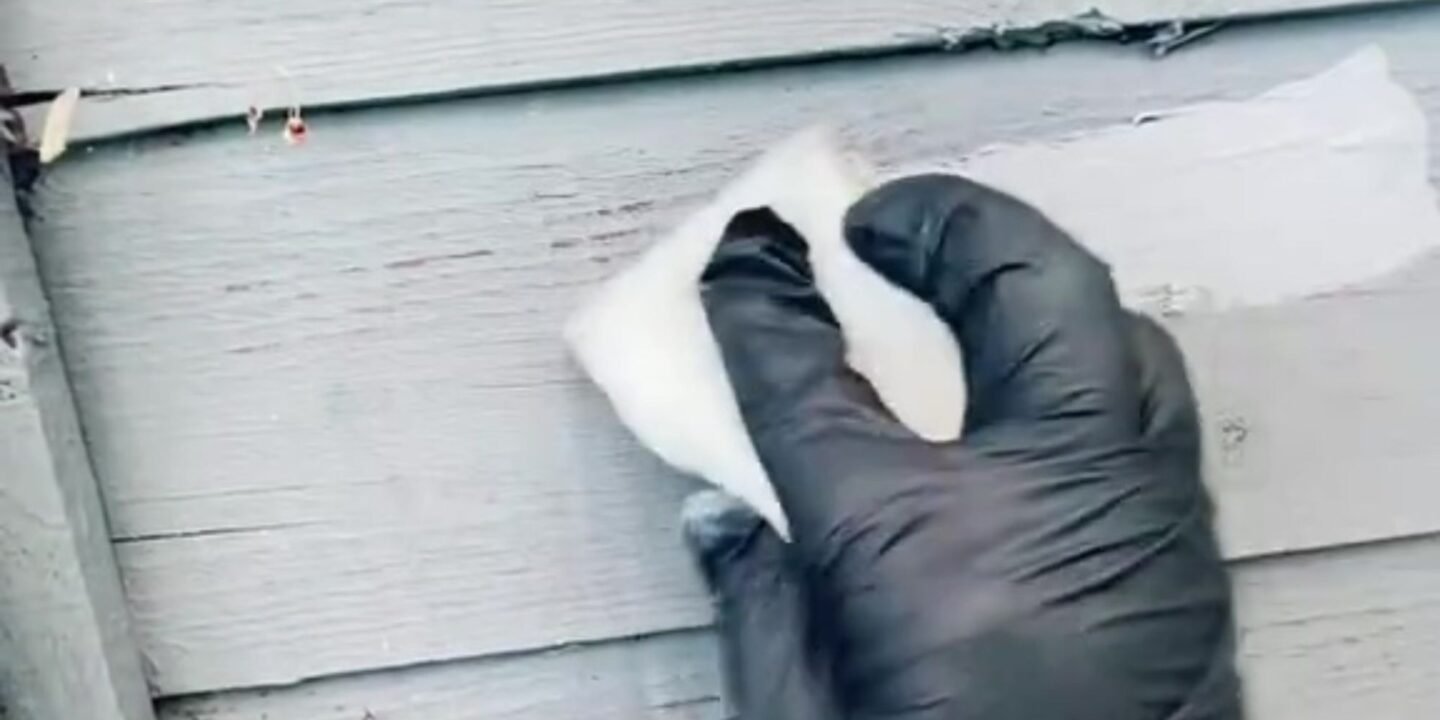
NOW that sunnier days are on the horizon, many people are turning their attention to their gardens.
If you feel like your fence could do with a spruce up and are considering giving it a lick of paint, one woman has shared a handy hack.
Julie claims the trick to painting fences is to ditch using a brush and pick up a sponge instead.
On her @julie_bud account, she wrote: “I tried the sponge painting on fences today.
“To be honest I didn’t expect it to work, but what a game-changer.”
The home owner shared how it sped up the process and made it so much easier.
Julie added: “All those wasted hours previously.”
She showed how you just need to dip a large sponge in the paint and then wipe it onto the wooden slats.
In the comments she advised: “Get a decent sponge like a car one, I used about five kitchen ones.”
In seconds the fence will be evenly coated, and you don’t have to worry about brush strokes being visible.
Many people were hugely impressed with the DIY hack and said they would try it out for themselves ahead of summer.
One said: “My shed needs a big refresh.. will 100 per cent try this!”
Another commented: “Use the £1 sponges from b&q they’re awesome for this just done mine.”
While some suggested using a sprayer or a brush, Julie claimed her method is “so much quicker” and is more accurate than a sprayer.
Simon Wardle, owner of patio supplier Armstrong Cheshire, also swears by the hack.
The expert revealed that painting your fence with a sponge can help to save you money as well as time and effort.
According to the pro, using a traditional brush can result in aching arms, uneven coverage, and a time-consuming technique.
“The flexibility and porousness of a sponge make it the perfect tool for painting your fence,” he explained.
“It can mould around and reach into any nooks and indentations in the wood, allowing for smooth coverage even on the most textured fence panels.”
He also pointed out the benefits to opting for sponges over paint bushes.
“Using a sponge significantly reduces the physical strain associated with traditional brush application,” Simon said.
For the best results, Simon suggested applying a primer to protect your fence from the elements.
As well as helping prevent weather damage, primer also ensures the paint adheres properly to your fence.
You should also clean any dirt or debris from the surface with a power washer or stiff-bristle brush.
This will help to prevent peeling or blistering in the future.
10 DIY hacks for under £1 each
These simple and affordable DIY hacks can help you get creative while saving money
Homemade Air Freshener:
Mix baking soda with a few drops of your favorite essential oil. Place it in a small jar with a perforated lid to keep your home smelling fresh.
Upcycled Tin Can Planters:
Clean and paint empty tin cans to use as stylish planters for herbs or small plants.
Custom Phone Stand:
Use a sturdy piece of cardboard or an old plastic credit card to create a custom phone stand. Decorate it with washi tape or paint.
DIY Lip Scrub:
Combine sugar and a bit of honey or coconut oil to make a natural lip scrub. Store in a small container.
Personalised Bookmarks:
Use old greeting cards or decorative paper to create unique bookmarks. Punch a hole at the top and add a ribbon for a finishing touch.
Decorative Mason Jars:
Paint or decoupage old mason jars to use as decorative vases, storage containers, or candle holders.
Easy Cable Organiser:
Use empty toilet paper rolls to organize cables and cords. Decorate the rolls with colorful paper or tape.
Magnetic Spice Jars:
Attach small magnets to the lids of small jars and stick them to a metal board or fridge for easy-access spice storage.
Handmade Coasters:
Cut out squares from old corkboard or felt and decorate them with paint or fabric to create custom coasters.
Natural All-Purpose Cleaner:
Mix equal parts water and white vinegar in a spray bottle. Add a few drops of essential oil for a pleasant scent. Use it to clean surfaces around your home.














